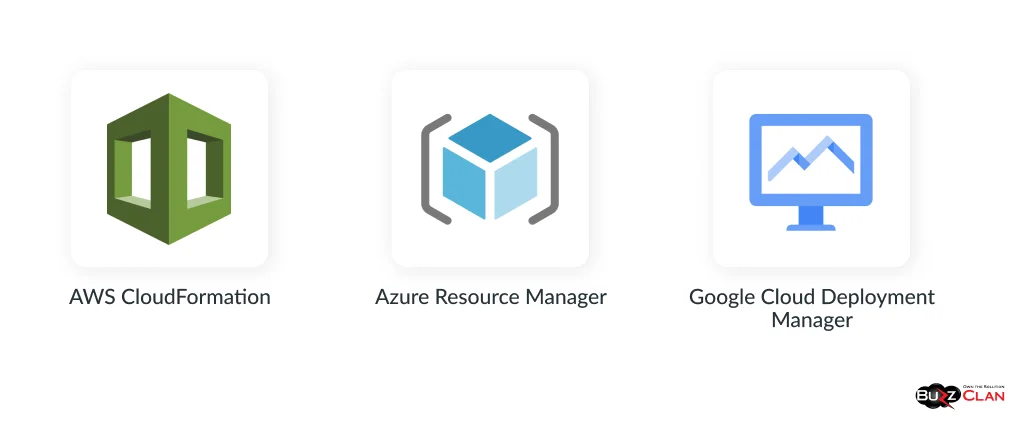What is Infrastructure as Code (IaC)?
Manoj Mehra
Mar 5, 2024
Infrastructure as Code (IaC) has emerged as a crucial DevOps practice for managing IT infrastructure and configurations through machine-readable definition files rather than physical hardware configuration or interactive configuration tools. This article will provide an in-depth look at what exactly infrastructure as code entails, key benefits, tooling options, best practices for implementation, and its overall role in modern IT automation.
What is Infrastructure as Code?
Infrastructure as Code (IaC) programmatically manages, provisions, and configures infrastructure resources using code, scripts, and definition files. As software development teams manage application code, IaC applies software engineering discipline to infrastructure automation.
With IaC, configurations for resources like virtual servers, networks, storage, load balancers, and connection topology are defined and maintained in human-readable declarative configuration files that can be treated like source code. These files can be written in JSON, YAML, HCL, etc., and integrated with developer workflows like version control and CI/CD pipelines.
IaC enables infrastructure to be reproduced and replicated programmatically. The infrastructure state is dynamically managed based on the definition instead of static, physical configurations. This brings agility, efficiency, consistency, and reliability to infrastructure changes.
How IaC Works

The IaC workflow consists of:
- Writing - Developers write declarative infrastructure definition files detailing desired resource provisioning and configuration.
- Execution - Specialized IaC tools interpret and execute definition files to instantiate real infrastructure matching the specified state.
- Updating - Definition files can be updated iteratively, and changes can be reapplied to adapt infrastructure.
- Validation - The infrastructure state is continuously validated against definitions to prevent configuration drift.
IaC follows either a push or pull model. Push mode automatically applies definitions, while pull mode waits for commands. State definition files are declarative, specifying the desired end-state. Procedural scripts can also be used for more complex scenarios.
IaC Tools and Solutions
Popular open-source IaC tools include:
- Ansible- Agentless automation using playbooks to define infrastructure builds and orchestration.
- Terraform - Infrastructure provisioning and management using HashiCorp Configuration Language (HCL).
- Puppet - IT automation with declarative manifests containing desired state configurations.
- Chef - Infrastructure definition and compliance enforcement using cookbooks with recipes and attributes.
Major cloud providers offer proprietary IaC platforms, including:

- AWS CloudFormation - Provision AWS resources using JSON or YAML template files.
- Azure Resource Manager - Define infrastructure for Azure cloud using JSON templates.
- Google Cloud Deployment Manager - Specify GCP resource infrastructure through YAML files.
Terraform
Terraform, developed by HashiCorp, is one of the most widely used open-source IaC tools. It uses declarative definition files to manage infrastructure lifecycles, including creation, updating, reading state, deleting, etc.
Terraform supports provisioning infrastructure across public clouds like AWS, Azure, GCP, private VM deployments, and container orchestration platforms. It is vendor-agnostic and prized for multi-cloud capabilities.
IaC and the DevOps Toolchain
IaC enables critical DevOps practices and integrates with complementary tooling:
- Version Control - Infrastructure definition files are stored and versioned alongside application code. Changes trigger CI/CD pipelines.
- CI/CD- Testing frameworks validate infrastructure code—automated deployment pipelines provision infrastructure changes.
- Monitoring - Metrics verify infrastructure health and utilization against a defined state.
- Security - Static code analysis finds risks. Access controls govern change management.
This infrastructure-as-code approach codifies the process for managing changes, providing information to radiators, and enabling team collaboration.
Infrastructure as Code in Azure
Microsoft Azure provides native IaC capabilities through Azure Resource Manager (ARM) templates. These declarative JSON files define resources for provisioning by Azure.
Benefits of Azure IaC include consistency, cost management, compliance, documentation, automation, and integration with DevOps toolchains. Azure Resource Manager simplifies cross-resource coordination.
Key Benefits of Infrastructure as Code

IaC offers numerous benefits:
- Consistency - Infrastructure provisioning is standardized and repeatable across environments using codified definitions.
- Documentation - Definition files serve as documentation of infrastructure state to facilitate onboarding and knowledge sharing.
- Reusability- Common infrastructure components can be made into modular, composable abstractions for reuse.
- Validation- Definition files and infrastructure state can be statically and dynamically validated. Issues surfaced early.
- Collaboration - IaC facilitates collaboration between developer and operations teams within the shared language of code.
- Reliability - Automated deployment reduces human errors. Infrastructure is systematically managed and version controlled.
- Efficiency - Programmatic orchestration is faster and less complex than manual configuration.
Further Reading
Infrastructure as Code Security
With IaC, organizations must ensure:
- Access controls and change management for definition files using version control systems and peer review.
- Static code analysis to surface security risks like misconfigurations or exposed credentials.
- Testing frameworks to validate infrastructure security policies and compliance in isolated environments.
- Runtime policy enforcement to prevent drift from desired configurations.
- Secrets management using tools like Hashicorp Vault to avoid checked-in secrets.
Adopting IaC Practices
Organizations new to IaC should:
- Identify infrastructure currently managed manually that can be migrated to code definitions. Start small.
- Evaluate popular IaC tools and cloud vendor options; select based on team skills and environment compatibility.
- Create coding standards and modular design patterns for infrastructure definitions. Reuse common components.
- Validate IaC practices using isolated sandboxes before deploying to production environments.
- Provide training to develop proficiency with writing declarative configuration files and using CLI tools.
- Integrate IaC tooling with source control, CI/CD pipelines, monitoring stacks, and access controls.
- Gradually shift mindsets and processes towards programmatic thinking as infrastructure complexity increases.
The Evolution of Infrastructure as Code
IaC concepts originated in the mid-late 2000s, driven by the need to automate data center configuration at cloud pioneers like Google. Early adopters codified infrastructure automation using shell scripts.
Later, platforms like Puppet and Chef introduced declarative state definition models. As cloud computing gained traction, IaC Definition as a Service solution like AWS CloudFormation emerged—open source tools like Ansible and Terraform standardized IaC approaches.
As infrastructure needs grow more complex and dynamic while development practices move faster, IaC has become critical for managing modern multi-cloud and hybrid environments. Integration of configuration management databases and policy enforcement ensures consistent governance and compliance.
Conclusion
Infrastructure as code is a paradigm shift in IT operations, introducing fundamental developer workflows like version control, continuous integration, and modular architecture to infrastructure automation. Organizations can rapidly provision reliable environments by codifying and programmatically managing infrastructure while efficiently adapting to evolving demands and technologies. IaC delivers the agility, safety, and reproducibility needed for DevOps and cloud-native infrastructure modernization.
FAQs

Get In Touch
